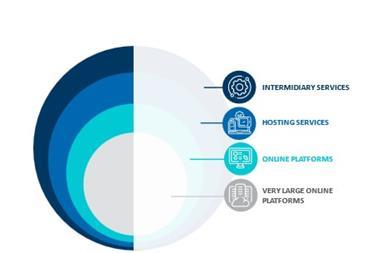In the latest in our series of FERMA updates from Brussels, Charles Low, head of EU affairs, explores new Solvency II amendments, which could create greater regional harmonisation across European captives
In July, the European Parliament’s ECON Committee published a report as part of the ongoing review of Solvency II.
While the proposed amends to the text of particular interest to FERMA may appear relatively minor, they mark a potentially significant milestone in the advancement of the captive insurance industry in the EU.

A key sticking point in Solvency II, and one which FERMA has been working diligently to unstick in recent years, is the issue of proportionality in the context of captive insurance.
The classification of such entities as ‘low-risk profile undertakings’ would have a significant bearing on the potential of the marketplace within Europe.
An automatic classification
For the last two years, FERMA has advocated for an amendment to the legislation that would not only allow for captives to be classified as ‘low risk’ but also that this status be applied automatically.
The rationale is a relatively straightforward one – by their very nature captives carry a low market risk as they are primarily set up to cover the risks of a specific industrial or commercial entity or group.
In the latest iteration of Recital 14 of the amended legislation, that automatic component has now been inserted.
The final part of the section now reads: “Therefore, captive insurance undertakings and captive reinsurance undertakings should benefit from the proportionality measures by being automatically classified as low-risk profile undertakings.”
”FERMA has advocated for an amendment to the legislation that would not only allow for captives to be classified as ‘low risk’”
FERMA also understands from the negotiations at the level of the Council of the EU that there has been some trepidation over the implications of classifying an undertaking as ‘low risk’.
As a result, some Member States are in favour of shifting from the term ‘low risk’ to ‘small and non-complex’.
This possible change in terminology is also indicative of what we deem a relatively less ‘proportionate’ stance by the Council in its general approach—one that essentially mirrored that of the Commission.
However, whether categorised as low risk or small and non-complex, FERMA believes that this is more of a semantics issue and will not have any meaningful impact on the substance of the legislation.
A more harmonised regulatory approach
The proposed amendments to Solvency II have also seen a change to Article 29(a), which now reads:
“Member States shall ensure that the requirements laid down in this Directive are applied in a manner which is proportionate to the nature, scale and complexity of the risks inherent in the business of an insurance or reinsurance undertaking.
”Member States shall ensure such application in particular, but not exclusively, with respect to those undertakings classified as low-risk profile undertakings.”
”Should the revisions to Solvency II regarding proportionality be maintained in the final text this will help create greater regulatory harmonisation across captive domiciles in Europe.”
The appeal of the European captive market both within its own borders and on the international stage has been somewhat hindered by regulatory requirements viewed as overly burdensome and complex when compared to other global domiciles viewed as operating more ‘user-friendly’ regimes, particularly as requirements can vary between Member States.
It is FERMA’s hope that should the revisions to Solvency II regarding proportionality be maintained in the final text this will help create greater regulatory harmonisation across captive domiciles in Europe and reduce the perceived complexity of making use of a captive in the region.
What low-risk status means in practice
The automatic application of ‘low risk’ status to captive insurance companies will have multiple benefits for the operation of the vehicle.
Firstly, reporting requirements will become less stringent and burdensome for captive managers, while solvency requirements will be proportionate to the risk profile of the company.
It should also be noted that while the amendments – if passed – are unlikely to have an impact on the cost of establishing a captive, the reduction in regulatory requirements placed on the entity could mean a reduction in the running expenditure.
As a low-risk entity, those responsible for key functions of the captive, including risk management, actuarial and compliance functions, would now also be able to perform other key roles “different to internal audit, any other non-key function or be a member of the administrative, management or supervisory body”, with certain conditions applied.
What happens next?
While these developments are very encouraging, there are still several stages to go before the amendments are officially signed-off.
The review is entering the final stages in the EU policymaking process, trilogues, which are held between the European Commission, the European Parliament, and the Council of the EU (which is the EU Member States).
These trilogues are likely to take place from October, as the Parliament is anticipated to vote on its position in September.
Delays could of course occur, but it is FERMA’s hope that the prudential regulations in their current form will therefore cross the political finish line during the current Spanish Presidency and a new era of captive proportionality will begin by the end of the year across the EU.
Another point of note
FERMA is also monitoring closely the wider insurance market implications of the proposed changes to the Solvency II regime, and the potential impact on corporate insurance buyers.
We have become aware of concerns in some areas of the insurance market that the revisions may lead to instances where some forms of insurance coverage become more restrictive or even unavailable due to increased capital or data requirements.
Recently, Insurance Europe commented on the revisions to Solvency II: “The insurance industry further highlighted the need for the review to get the key principle of proportionality working in practice and to avoid disproportionate costs which ultimately fall on customers.”
This is an area of concern, and FERMA will look to maintain robust dialogue with the insurance market practitioners and supervisors to get a better understanding of potential market impacts of the potential regime revisions.




















No comments yet